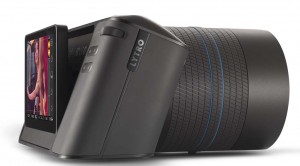
 Imagine a three dimensional photo, where you at any time can set the focal point as you please.
Imagine a three dimensional photo, where you at any time can set the focal point as you please.
For us, who grew up in the film-era, it can be very hard to grasp how it can be possible to change the focus after the image has been taken, change the perspective (a little bit), and even to show a 3D image without special filters or glasses.
How does it work?
In the 90s a Dr Bennet Wilburn of Stanford University experimented with a room filled with cameras connected to a supercomputer. The computer collected image information from all the cameras with corresponding focal points and combined them into one picture through special software.
Continuing this work, a Dr Ng developed a camera with a sensor, not only registering the light falling into a pixel, but also the intensity and the angle of the light falling into the camera.
The result – a living image
The company where the two innovators from Stanford is now working has recently developed the second generation of a camera that creates these images, the Lytro Illium. It actually looks like a camera and have a 9,5-77,8 mm lens, which equals a 30 – 250 mm lens on a full format camera. The lens has a constant 2.0 aperture. The sensor is of CMOS type and registers 40 megaray. Yes, it measures rays instead of pixels. The images are 4 mp in 2D.
The camera will be available from august this year and can be pre-ordered from lytro.com for the introduction prise of 1 500 USD, and you’ll get your name engraved too, for that prise. You can also buy it from the Apple online store and Amazon.
Klick on the image and the frame down to the left, see how it works with a sample slideshow. Simply point at where you want the focus to be.
Facts on the technology, whitepaper: //www.lytro.com/downloads/resources/fact-sheets/Lytro_Light-Field-101.pdf
Lytros YouTube channel: //www.youtube.com/user/lytro


